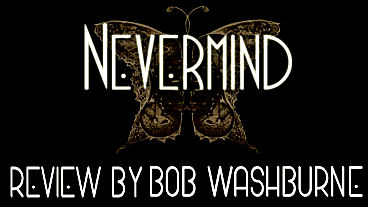
Nevermind Review
What sets Nevermind apart is the optional use of a heart monitor. But even without it, Nevermind is a very good, professionally-made game that’s fun to play.







Genre: Point-And-Click Adventure / Psychological Horror
Release date: September 29, 2015
In Nevermind you play the part of a psychologist who uses the latest technology to enter a patient’s mind and uncover the suppressed memories that have failed to respond to conventional therapy. Happy memories usually don’t get suppressed. So we can expect that the images in the patient’s mind will not be pleasant – the more traumatic the memory, the more horrific the mindscape.
Our job is to explore the patient’s mindscape and collect the problematic memories (symbolized by the mind as photographs). The mind, however, does not like to be messed with and will hide its memories cleverly or lock them behind crafty puzzles. Once you’ve collected all ten memories you must decide which five are the real ones and sort them in chronological order.
All of this is classic adventure gaming fare. What sets Nevermind apart is the optional use of a heart monitor. If the game sees your heart rate increasing (obviously from fear) then it steps up the horror elements and makes the game more difficult to play. This would be really cool except for one little detail – the heart monitor is expensive and can only be used in this one game. When I looked at the supported monitors at the Flying Mollusk web site, the cheapest was $100. I checked and my budget said, “No.”
So I played through the game without the heart monitor. And it was good fun. The graphics are well done, the voice acting is excellent, the occasional puzzle is fair. Difficulty level of the game’s puzzles runs from medium to hard. Now, the Kickstarter campaign said that if you play without a heart monitor then the game would try to detect fear via changes in your playing style. Great, but I never noticed any changes. It could be that I have the strength of ten because my heart is pure. But more likely it was because I never felt threatened.
Nevermind promotes itself as a horror game, but it never felt horrific to me. There are a couple of BOO moments which gave me a start, but I always felt an alien detachment – I knew this was someone else’s nightmare (although there were a couple of mazes and several other frustrating areas that might have caused my blood pressure to go up). But either my play style never changed enough to warrant attention, or the change was too subtle to notice. Either way, it felt like I was missing a part of the promised experience.
The graphics are very pretty and appropriate to the story – peaceful and realistic in the calm places, wild and surreal in the nightmare places. The screen shots don’t give justice to the dynamic nature of the world; branches bend as the wind blows through the trees, grotesque things pulsate, and so on.
There are three separate story lines – an introduction/trainer and two patients. While that might not sound like much, it pretty much exhausts the possibilities. Any further patients would have felt repetitive. I left feeling satisfied that I’d gotten my money’s worth.
There is no speaking during the game, but the patients do speak to you just as you begin and just after you finish. The voice acting is excellent and thoroughly professional. I don’t remember any music, but the sound effects were all well done and appropriate.
And one more impressive point – instructions are actually included! Wow, think of the possibilities if everyone did that and you wouldn’t waste the first chapter of a game just trying to figure out what is going on. Incredible. Well done!
The only nitpick I can raise is that in the very beginning, when you get to the facility to start your new job, it seems to take forever to get to your office and begin. This is simply because the game development was funded by Kickstarter and the developers needed lots of wall space for plaques and awards to display the names of the backers. Pity this couldn’t have been better integrated into the game, but I don’t know how you would do that within suppressed memories.
There’s one more interesting twist. Once you’ve completed the therapy for a patient you’re given the option to explore further and accelerate that patient’s healing. This consists of going back into the patient’s mind and clicking on certain things. Just what you need to click on and in what order is the tricky part. There are ten clues for each patient, and the game decides which target to acquire. You job is to figure out which clue is appropriate for that target and just what it means. There is no feedback other than a brief acknowledgment when you get it right. These puzzles were intended to be difficult, and they are. But they can be completely ignored if you like
In the final analysis, this is a very good, professionally made game that’s fun to play. As it stands, I give it a B+. If you add to that the heart monitor, then the additional innovation would bump the score up to A-.
|
+ Well made scavenger hunting game
+ Well-integrated puzzles and excellent voice acting
+ Optional play for additional back story
+ Optional heart monitor will dynamically modify game play – Heart monitor is expensive and can only be used by this one game
– No noticeable play-style replacement for heart monitor.
|

|
Processor: i5 5000 series @1.6 Ghz
Processor: Intel i5 2.0 Ghz

Leave a Reply